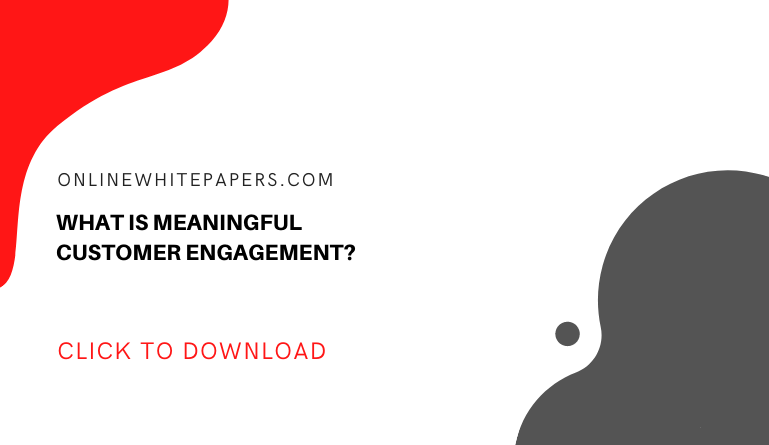If we consider the example of a car and relate it to today’s marketing function, then this car does require fuel to function efficiently. Data is the fuel that propels this car to ensure that it motors forward. Today we can see that consumers are constantly generating large quantum of data through different means. It is to be noted that, every data that is generated is not generated the same way. Hence, it becomes very pertinent to deliver personalized marketing and user experience, which is why marketers prefer a source such as a single customer view.
This article will give you further insights into a single customer view to help you align it with your marketing function.
What is a single customer view?
A single customer view is also known as a 360-degree view. It is a methodology where marketers gather data about their prospective customers and existing clients and collate it into a single data point. Having put all customer data into a single touchpoint, it becomes a powerful tool because it gives a complete view of every activity and action performed by clients – whether it is on a website, mobile app, or an offline store.
What types of data does it use?
As indicated in the above paragraph, a single customer view (abbreviated as SCV) uses information coming from various sources. From an organization’s point of view, these sources can be spread across multiple business entities and departments as each department might be using different tools and ways of capturing information. This is not just limited to marketing as a department but includes functions such as sales, purchase, operations, and many more.
A user or customer data can consist of the following:
-
Behavioral data
This data is usually considered as data around various categories and products that users browse on websites, eCommerce stores,s or mobile apps. This also includes products added to the card, products abandoned in the cart, and other such information. Even details like clicks, scrolls, visit on specific landing pages and the time spent there, etc. all form part of such data.
-
Offline Data & CRM Data
Offline data is data coming from sources such as a postal address, email addresses, telephone details, and even other information such as email address, social medial information, and so on for part of this data source.
-
Transactional data
Data that is captured in transaction systems such as products purchased, orders placed, any sort of data around renewals or cancellations, and so on.
-
Compliance Data
This is particularly in line with GDPR data that is provided by users as part of the GDPR consent. Of course, it is up to the users to define on what level of data is to be provided in GDPR consents.A significant aspect of the single customer view is the fact that it relies more on first-hand information or data that is collected through various sources as indicated above. This first-hand data is far more crucial and more valuable as it is coming directly from real clients and not from any anonymous sources.
Depending on the different marketing channels and overall organizational requirements, the data that is collected and unified can be consumed in many ways. However, there are some applications that actually steal the limelight in this process.
- Emails and CRM systems
- Ads by Facebook and Google
- Campaigns for cross-selling and up-selling
- Personalized Content
Why is a Single Customer View Important?
We understood what a single customer view is and the different types of data and data sources required to set up an SCV system. Here we will look into the importance of having a single view of the customer.
-
Optimized Delivery Time & Custom Tools
It is by far the simplest of techniques to enhance the conversion ratio. Here marketers are just supposed to send the right message at the right time.
-
Ease of testing & Personalized Customer Journey
An effective SCV system should be able to deliver a personalized journey of a customer’s lifecycle. This is something that most customers have started expecting.
-
Proper segmentation & Personalization
Organizations having a diverse set of products and a very large customer base would need the right set of tools for segmenting the customers and delivering personalized messages.
What are the main benefits of applying a single customer view?
So far, we have understood what a single customer view (SCV) is all about and the kind of data it consists of. However, it is important to know how this will benefit your business. Here, we shall look at some of the salient benefits of having a single view of the customer.
-
Marketing data across channels
One thing we know is that data is available everywhere. The fundamental challenge is to collect the data and the next task is to make sense of the data by connecting the dots, or what we call data touchpoints. Since the users have too much flexibility to swap between desktop, mobile, website, mobile app, and whatnot, it makes the life of a marketer nightmarish to work on such a dynamic nature.
However, a key benefit is that with so many diverse data set coming from multiple sources, it allows the marketer to create a complete customer journey and relate it with your brand.
-
No data duplication
Another key benefit that SVC delivers is the elimination of any isolated data or duplicate data. Even if organizations are adding new departments and creating new channels or data creation, a single customer view ensures that these data points are captured.
-
Better decision making
Having a comprehensive view of consumer’s behavior, organizations can stop taking marketing decisions, which are purely based on assumptions. On the contrary, through SCV, organizations get an individualistic view of data. This allows organizations to identify the potential buyers in a better way and create opportunities for cross-selling and up-selling.
-
Improved targeting
As soon as you receive a single customer view, it helps in channelizing your target marketing in a more efficient manner. Since, you get visibility of where your potential buyers are, shopping, it allows you to deliver customized messages to them. These are just a few of the benefits to elaborate on. However, the list goes on with other benefits such as:
- Detailed understanding of customer requirements
- Nurturing of Customer Lifecycle Marketing
- Structured and detailed segmentation
Disadvantages of Single Customer View
While we went through the benefits of a single customer view, it is also important to look at the cons or demerits of this methodology. While it is definitely a mechanism to help organizations to improve their marketing efforts in the right direction. However, these are some of the problems around SCV.
-
Inappropriate Data Linkage
it is important to have a strong roadmap for your data. If each department is collecting data in their own way, not having a proper linkage to this data for uniformity can cause severe disparities between the data that is collected.
-
Poor Data Quality
While we focus on connecting the data points, it is also important to focus on the quality of data. There is a high possibility of the quality getting compromised at each source level, thereby rendering your SCV process worthless.
-
Operating in Isolation
A single customer view is a collaborative tool and if someone is collecting the data and operating it in a silo, then it can have a significant impact on the marketing initiative.
-
Technical Tools
While marketers focus on data sources, data touchpoints, if they don’t have the right set of technical tools then the whole effort can go haywire. If not for the organization, at least the marketing department needs the SCV tool for better performance, as it is the future.
A single view of the customer – An Example
Let us look at a case study to know how a single view of the customer was implemented. We are talking about global media & events company UBM and in particular their EMEA office. UBM EMEA had developed an SCV model to support organizational data and marketing activity. The system fetches data from multiple sources such as their internal systems and supplier information. The kind of data that the system pulls comprises registration data, ticket buyers, delegates to conferences, subscribers, people who signed up to newsletters, and so on.
In yesteryear, it was a challenge for UBM to segment their potential customers as it was time-consuming and costly activity. However, with SCV implanted, it helps marketers to create customer segments quickly and easily and also deliver email communications through automation.
A single view of customer tools
Having the right set of tools is important to capture customer or prospective customer data. Since SCV is implemented across the organization, though spearheaded by marketing, it is important to have the right set of tools across the company. This includes CRM systems, for we know tools such as HubSpot and Salesforce are very effective.
Moreover, purchase departments and core operations departments use ERP systems to capture transactional, supplier, and operational data. These systems are quite robust but keep churning out data, which can be used by marketers for unification. Every function in an organization uses some of the other systems to capture data – all that is required is to collate, connect the dots and make an informed decisions based on the output.
Final Thoughts
As we hear the saying, “numbers speak for themselves,” it is important for marketers to get a consolidated, comprehensive, and 360-degree view of customer data. Of course, this subject is still open for debate due to various scenarios that people are coming across in the field of marketing. It is good to have a difference of opinion as it ensures that the subject remains alive. Experts have shared their views on the utilization of SCV and how it will help in improving the sales and loyalty of customers.








